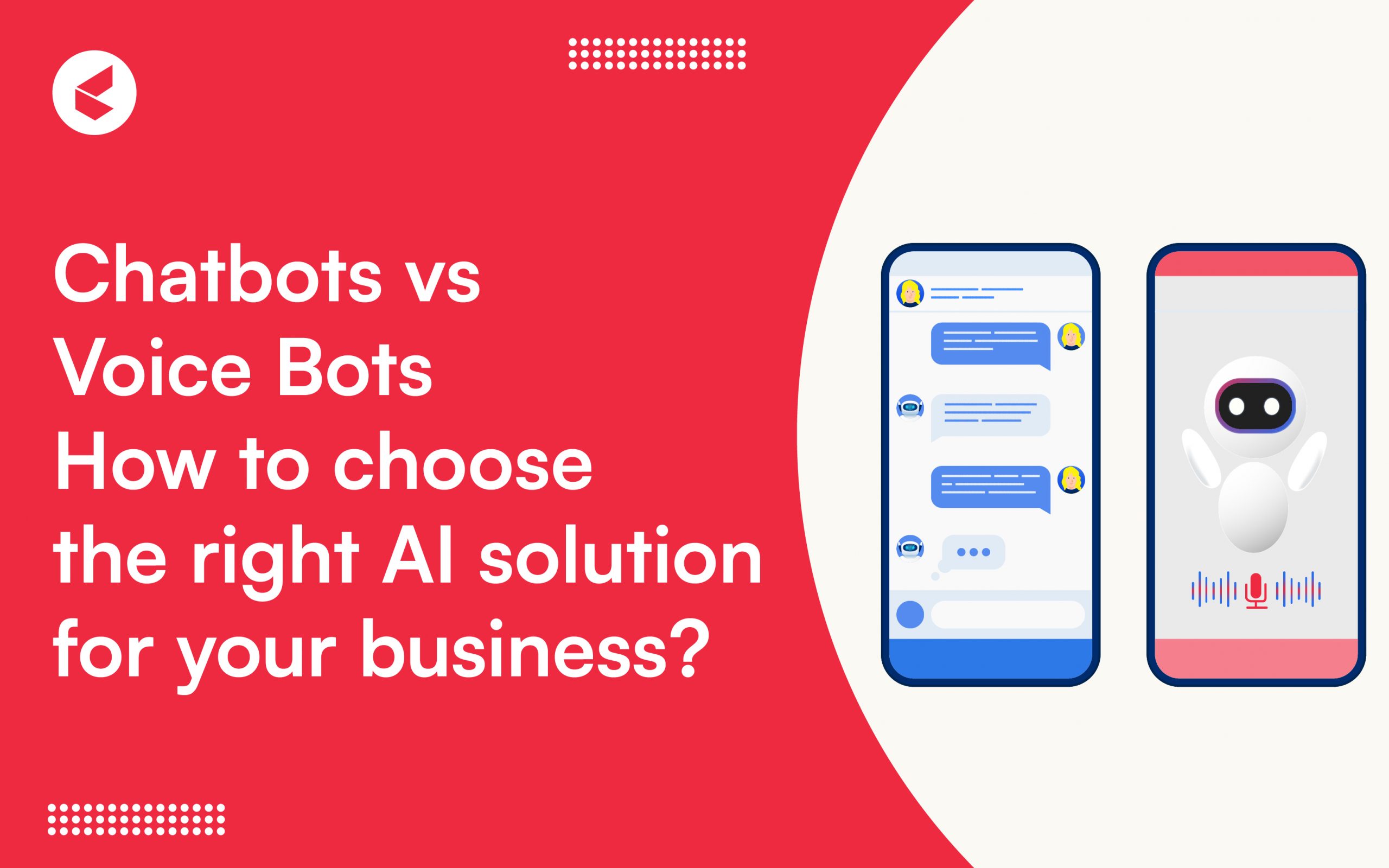Table of Contents
3. Voicebot vs Chatbot: 5 Key Differences
4. Advantages of Chatbots for Customer Experience
5. Advantages of Voicebots for Customer Experience
6. Choosing Between Voice Bot vs. Chatbot: Which is Right for Your Business?
7. Future Trends in Chatbots and Voicebots for Customer Experience
“Know what your customers want most and what your company does best. Focus on where those two meet.” – Kevin Stritz.
Companies that focus on what customers want and are able to deliver on it are the companies that will stand out in the crowd and competition today.
Recent studies indicate a rising demand for self-service, which simply means that customers are choosing to find answers on their own, over relying on agents. Being able to cater to this demand requires businesses to know and adapt to the recent innovations in technology.
Self-service technologies like chatbots and voice bots, powered by artificial intelligence (AI) and Natural Language Processing (NLP), are able to provide customers with exactly what they want: quick, effective, and relevant support.
While voice bots and chatbots have proven to be a game-changer in customer service, it is important for businesses to know what their functions are and where they can be used. The best technology for your brand is one that, as we have established, caters to the needs of your customers.
Let’s look at some comparisons of voicebot vs chatbot, their advantages, and how to make the right choice for your business.
What is a Chatbot?
A chatbot is a computer program that uses artificial intelligence to simulate conversation through texts.
Modern chatbots use NLP, ML, and deep learning technologies to understand, interpret, and provide human-like responses.
Chatbots offer customers an immediate self-service option. For instance, customers can access a chatbot from a brand to know the status of their order or to learn about current offers or deals.
Brands use chatbots to improve their responsiveness to customer queries and enhance the customer experience with appropriate and timely support.
Some key features of chatbots include:
- Omnichannel Platform: Chatbots can deliver continuous customer service on platforms like social media, SMS, and email, offering integrated customer support across your company’s channels.
- Reports and Analytics: Chatbots can examine all the information they gather from customer interactions, such as the frequent questions customers ask or what are the areas that customers need most help with.
- Multilingual Support: Chatbots’ multilingual capabilities allows it to help customers in the language of their choice, enabling your brand to create individualized experiences for your audience anywhere on the globe.
Chatbots are tremendously beneficial for businesses in several ways, such as:
- Chatbots are available 24/7, empowering your customers to contact your company at any time of day.
- Chatbots provide individualized experiences by gathering user information and learning about their preferences.
- Chatbots can be configured to offer proactive customer support, addressing problems before clients bring them up.
- Chatbots are a great way to get customer feedback on the quality of service. It assists you in enhancing both the chatbot and service quality.
What is a Voice bot?
Voicebots are a bit more advanced than chatbots. As the name suggests, voice bots interact using customer voice as a medium instead of typed text. Almost all voice bots today use AI to understand spoken language and provide context-aware responses.
Customers can access company voice bots in various ways:
- By visiting a company’s website and using the “voice search” options on the service window.
- By calling a company’s service line and interacting with the IVR using their voice.
To provide exemplary customer service at scale, a voice bot leverages a combination of technologies and features, including:
- Natural Language Processing (NLP): NLP technology helps a voice bot process and understand natural speech without needing specific phrasing or keywords. It enhances adaptability to changing diction and interpretation accuracy.
- Streaming Recognition: This technology helps a voice bot quickly process the intent and context of a customer’s query and respond in real time.
- Voice Analysis: Voice bots can conduct voice analysis to understand customer emotions, tone, and other aspects to help with sentiment analysis. This enables the voice bot to tailor subsequent responses.
- AI/ML-powered learning: AI/ML-powered voice bots can learn from each customer interaction to refine and improve subsequent interactions. This cumulative impact helps the voice bot improve with each service interaction.
Businesses have a lot to gain from implementing voice bots in the customer service niche. Here are some of the key benefits:
- Voice bots provide voice-based communication, eliminating the need for customers to type. This makes voice bots quicker than chatbots in providing immediate service.
- Voice bots can seamlessly be integrated with voice assistants to expand their functionality beyond customer service.
Voicebot vs Chatbot: 5 Key Differences
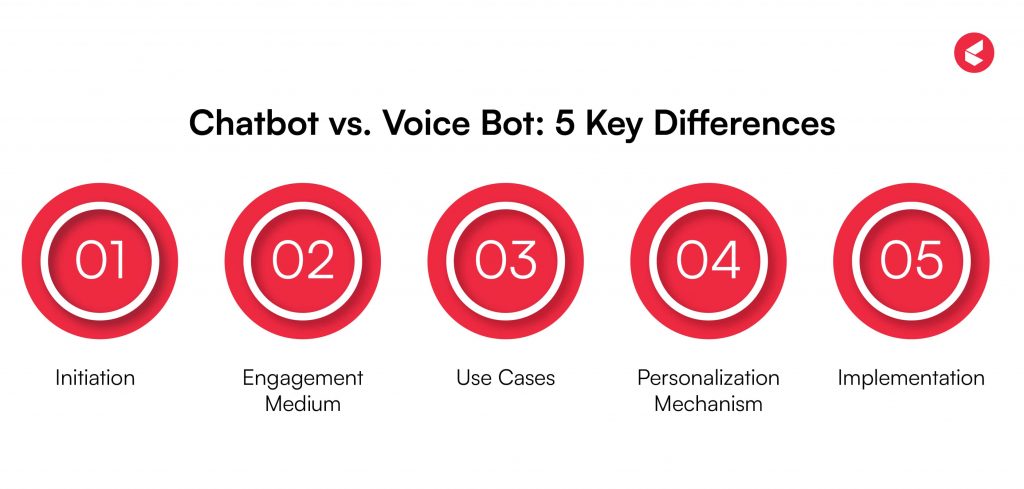
Chatbots and voice bots, both tools of customer service, differ from each other in more ways than one.
Tabulated below are the key differences between these two technologies:
| Property | Chatbot | Voice bot |
| Initiation | Typed text | Voice |
| Engagement medium | Screen-based | Screen not necessary |
| Use cases | Apps, web | Calls, smart speakers |
| Personalization mechanism | Typed-text interactions | Voice profiling |
| Implementation | Plug-and-play | Dedicated hardware and tech |
Initiation
- Chatbots require typed messages to initiate customer service. Customers can select from a list of queries or type their own to start a conversation with a chatbot.
- Voice bots require voice activation to guide customers through the service menu. Customers need to speak their queries or reply Yes/No to Interactive Voice Response (IVR) menus when accessing a voice bot.
Engagement Medium
- Since chatbots work with typed text, a screen is necessary to engage your audience. Therefore, chatbots are suitable for websites and apps—channels that require a screen.
- Voice bots are perfect for engaging your audience without relying on screens. For example, you can create call-based IVR menus or leverage smart speakers as an engagement medium.
Use Cases
- Websites, apps, instant messaging platforms, and social media platforms are the best use cases for chatbots. These channels allow customers to type easily and interact with the chatbot hassle-free.
- The best use cases for voice bots are channels that do not rely on screens, such as smart home speakers, calls, car speakers, and IoT-enabled devices. Voice bots can also be applied to apps to provide quick search options for people with special needs.
Personalization Mechanism
- Chatbots gather user data from the typed information. For example, the user may request a chatbot to provide order status updates and request quick delivery. Chatbots record this information for future personalization.
- Voice bots provide personalization by recognizing customers’ voices and creating custom voice profiles for each user. This enables a voice bot to provide customers with context-aware service.
Implementation
- Chatbots are extremely simple to integrate into a company’s existing channels and systems. They don’t require much setup and can also be used with existing AI/ML tools.
- Voice bots work with specific technologies and may require dedicated hardware to be implemented properly.
Advantages of Chatbots for Customer Experience
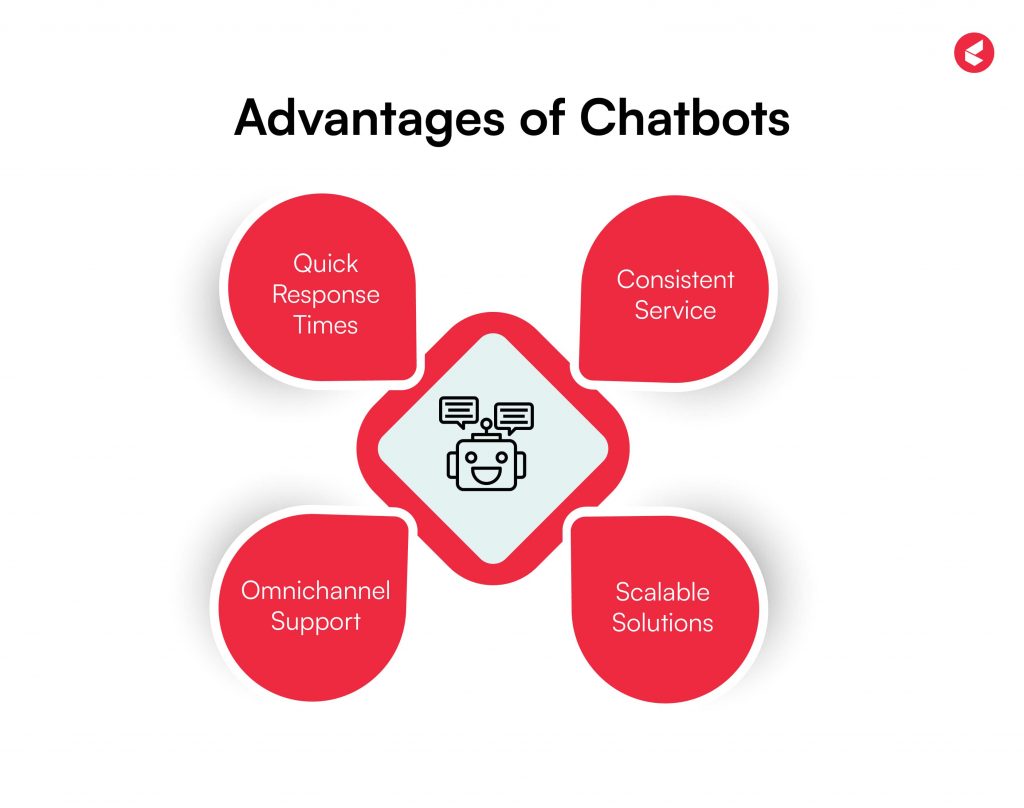
Chatbots are capable of delivering exemplary support as well as memorable customer experiences. As a result, chatbot usage has almost doubled since 2020.
Gartner reports that the top five services that chatbots deliver with high-resolution rates to customers are:
- Processing Returns and Cancellations: 58%
- Order/Purchase: 52%
- Account information: 43%
- Payment/Transactions: 40%
- Feedback: 38%
Here are some of the benefits of chatbots for customer experience:
1. Quick Responses
Speed is the most crucial aspect of customer service. In fact, the quality of service is measured by the time it takes for a customer to find the answers they need.
Chatbots enhance a brand’s responsiveness to customer interactions by providing prompt and quick responses. There is no waiting time (at least for basic queries like order status), which helps deflect a significant amount of the tickets from service agents while enhancing customer service speed.
2. Consistent and Efficient Service
AI-powered chatbots are capable of providing accurate solutions to frequently asked questions.
For example, customers can use chatbots to understand how to set up a new electronic item they bought.
Chatbots replicate the same high-quality service for each customer every day without burnout, helping establish consistency in service no matter when a customer initiates a conversation.
3. Omnichannel, Multichannel, and Cross-Channel Support
Chatbots provide omnichannel and cross-channel support, which allows customers to interact with businesses from any channel. Customers do not need to provide context or repeat their issue over and over again, they can continue the conversation effortlessly on any channel they want.
Chatbots also allows your business to integrate multichannel support on centralized systems for streamlined access to customer data.
4. Scalability of Service
Chatbots can execute hundreds of conversations simultaneously while storing and analyzing customer data in real time. For example, the same chatbot can serve hundreds of customers who access your website across the country.
This helps businesses scale up or down as required without significantly changing their workflows or operations. All you need is the right type of chatbot.
Advantages of Voicebots for Customer Experience
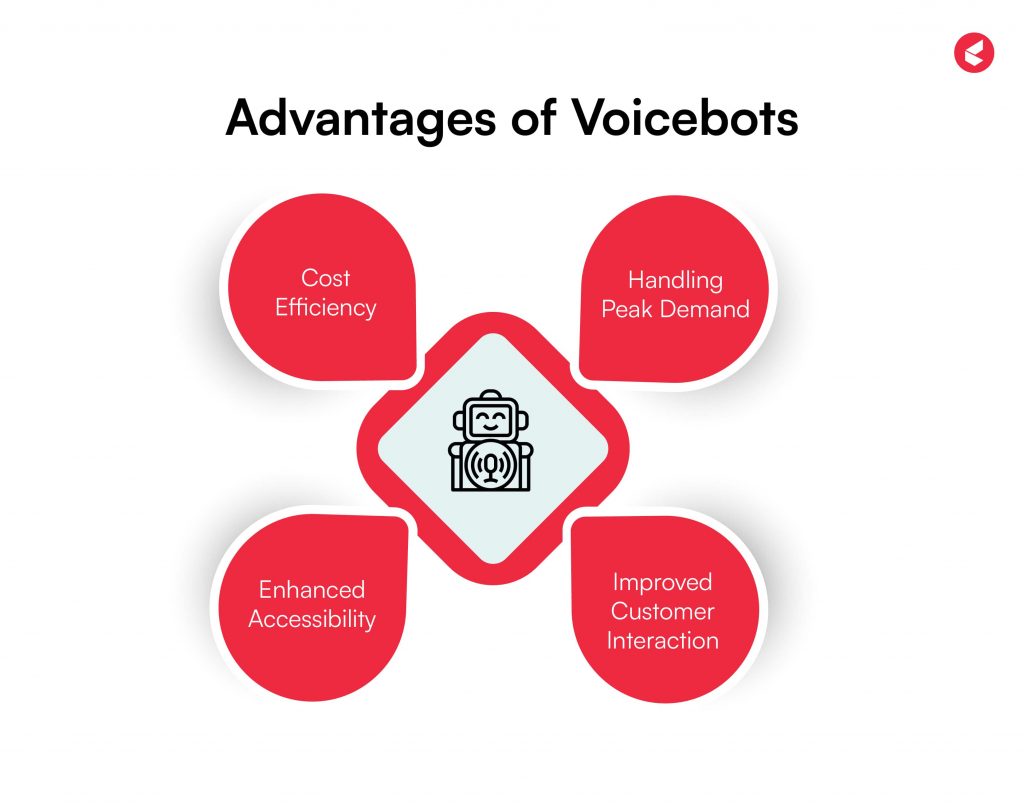
According to a report by 8×8, voice bots rank third among AI’s most common uses. 52% of organizations have invested in GenAI for their voice bots in the contact center.
Thanks to NLP, voice bots are gaining popularity rapidly. This technology makes voice bots capable of providing assistance through human-like conversations while eliminating typing from the service equation.
Voice bots provide several benefits for businesses, including:
1. Cost Savings
Voice bots help reduce the cost of implementing extensive call hardware across your contact centers. As voice bots deflect basic queries from service agents, you only require the bare minimum of staff to handle the call volume for complex queries.
Additionally, voice bots equipped with NLP can have natural conversations with customers, enhancing their service experience with your brand. When powered with AI, voice bots can do much more than solve problems—they can transform into virtual assistants for your customers.
2. Handling Peak Demand
Call volume at a contact center fluctuates every hour. Voice bots can act as the first line of defence and handle the regular call volume and high incoming queries to prevent customers from experiencing a busy line or long waiting times. It helps improve customer experience at your contact centers.
3. Enhanced Customer Engagement
Modern voice bots do not sound robotic at all. They are equipped with NLP and Natural Language Understanding (NLU), which help them hold natural conversations with customers. This keeps them engaged while providing guidance and assistance, a great way of humanizing brand conversations with customers.
4. Better Accessibility
Voice bots do not require customers to type anything, making them accessible to anyone. Furthermore, voice bots can converse in multiple languages, further enhancing accessibility.
Choosing Between VoiceBot vs Chatbot: Which is Right for Your Business?
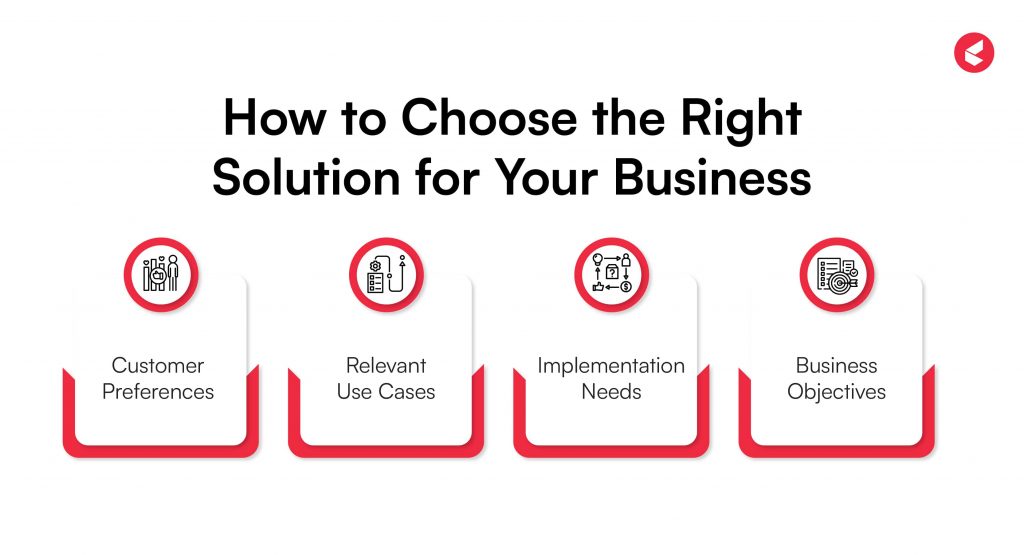
Voice and text are both unique media of expression and conversation. They both use unique language and patterns. Therefore, the choice between a voice bot and a chatbot depends on the type of conversations your brand is equipped to handle.
More factors influence the choice of voicebot vs chatbot, such as:
1. User Preferences
How do your customers prefer to get in touch with you?
Analyze your contact center and customer channels to measure engagement across calls and messaging. This will give you an idea of how your customers like to contact you.
Enhancing customer experience at the point of contact may be more strategic than providing new touchpoints for customers to contact you.
So, for instance, if your customers prefer chatting, you should opt for chatbots.
2. Use Cases
Now, consider how your business initiates contact with customers—is it primarily through chat-based channels or calls?
Chatbots are the more strategic choice to reinforce customer support over your screen-based channels (like SMS, social media, etc.) However, if you want to improve customers’ calling experience, consider voice bots.
3. Implementation Requirements
Chatbots are easier to implement and launch as they come in ready-to-use integrable kits you can unpack and configure.
Conversely, voice bots require the setup and integration of complex technologies, such as Automatic Speech Recognition (ASR), that help them work.
So, if you are looking for quicker customer experience solutions, chatbots are the more suitable choice.
4. Business Goals
What do you hope to achieve by implementing voice bots or chatbots?
Chatbots are the more convenient choice if your website aims to provide instant and accurate customer service.
In contrast, voice bots help you streamline your incoming customer calls and provide more accessible solutions to customers.
Future Trends in Chatbots and Voicebots for Customer Experience
AI-powered voice bots and chatbots hold a lot of promise for the future. The intriguing fact is that the paths of these technologies are the same.
As AI algorithms and training models become more advanced, chatbots and voice bots also converge in capabilities.
For instance, thanks to the growth of low-code and no-code platforms, it is now easier to build custom chatbots and speech bots without learning the code. This trend is encouraging businesses to employ voice and chatbots more frequently.
With the advent of pre-trained large language models like GPT-3, it is possible to properly train and configure chatbots and voice bots and provide them with generative capabilities. A single bot can likely be proposed to execute voice- and chat-based conversations with customers using these generative, conversational AI models.
Furthermore, leveraging machine learning is set to help chatbots and voice bots learn quickly from customer conversations to identify preferences and query patterns. This is extremely useful for designing chatbots and voice bots for proactive customer service to enhance experience and engagement.
As more and more people install voice-connected devices around their environment, brands can integrate their voice bots into these products to provide expanded service to customers.
Conclusion
The fact that chatbots and voice bots can be powered with AI for better service coverage and customer experience makes them invaluable business assets today.
If you wish to equip your business with next-generation chat and voice bots, Kapture CX has you covered. It is a customer experience platform that provides multiple CX solutions, including powerful chatbots and voice bots.
Kapture leverages AI-powered chatbots that can access data from multiple sources to answer customer queries and continuously improve their responses by analyzing each interaction.
It also provides you with industry-specific voice bots that provide relevant and precise information to customers. Kapture voice bots are context-aware and empowered to resolve customer queries swiftly.
To learn more about the features and functionalities of Kapture’s chatbots and voice bots, contact us today!
Frequently Asked Questions
Most chatbots are designed only to handle basic customer queries. If you want a chatbot to handle complex questions, you must train it using detailed AI algorithms to handle specific problems.
A voice bot is the more basic version of a voice assistant. It is designed to follow simple, pre-set menu items, whereas a voice assistant can converse with a customer.
If you require a quick customer self-service solution, a chatbot is ideal, as it can be set up quickly. But if you need a specialized customer service solution (like accessibility enhancements), choose voice bots.
